Table of Contents
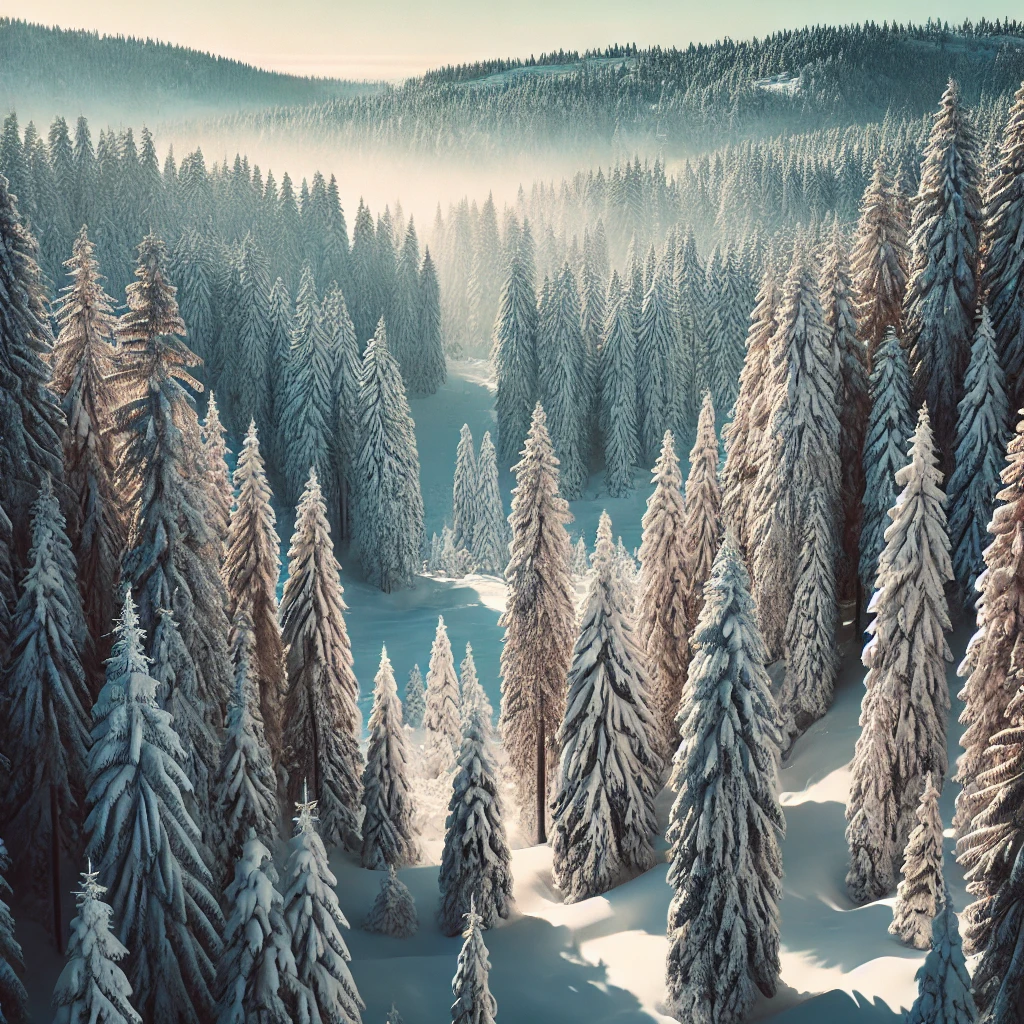
Introduction to Winter’s Charm
Winter holds a distinct allure that captivates the imagination and transforms the natural landscapes of the United States into breathtaking vistas. As the season arrives, a gentle blanket of snow envelops the scenery, creating a pristine, almost magical environment. The transformation brought about by winter’s arrival is not merely superficial but profoundly alters the essence of these landscapes, offering a new perspective on their inherent beauty.
The impact of snow on diverse regions across the U.S. is striking. From the dense forests of the Pacific Northwest to the expansive plains of the Midwest, and the rugged mountains of the Rockies, each locale dons a unique winter coat. Snow-covered trees glisten in the sunlight, icy lakes reflect an ethereal glow, and rolling hills present a serene white canvas. This season accentuates the distinct features of each region, revealing aspects of their natural splendor that remain hidden during warmer months.
Winter’s charm is not only a visual delight but also a sensory experience that evokes a deep appreciation for nature’s changing facets. The crunch of snow underfoot, the crispness of the air, and the peaceful hush that descends with the first snowfall contribute to the season’s unique allure. This is a time when the landscapes invite exploration and provide a tranquil retreat for those who seek solace in nature’s embrace.
In the following sections, we will journey through some of the most stunning winter landscapes across the United States. Each location, with its snow-draped beauty, offers a distinctive glimpse into the majesty of winter. From iconic national parks to lesser-known gems, this exploration will illuminate the myriad ways winter enhances the natural world, creating timeless portraits of serene and captivating beauty.
Yosemite National Park: A Winter Wonderland
Yosemite National Park in California undergoes a breathtaking transformation as winter envelops its iconic landscapes in a blanket of snow. This season reveals a different facet of the park, where well-known landmarks such as Yosemite Valley, Half Dome, and El Capitan present an enchanting winter beauty that captivates visitors.
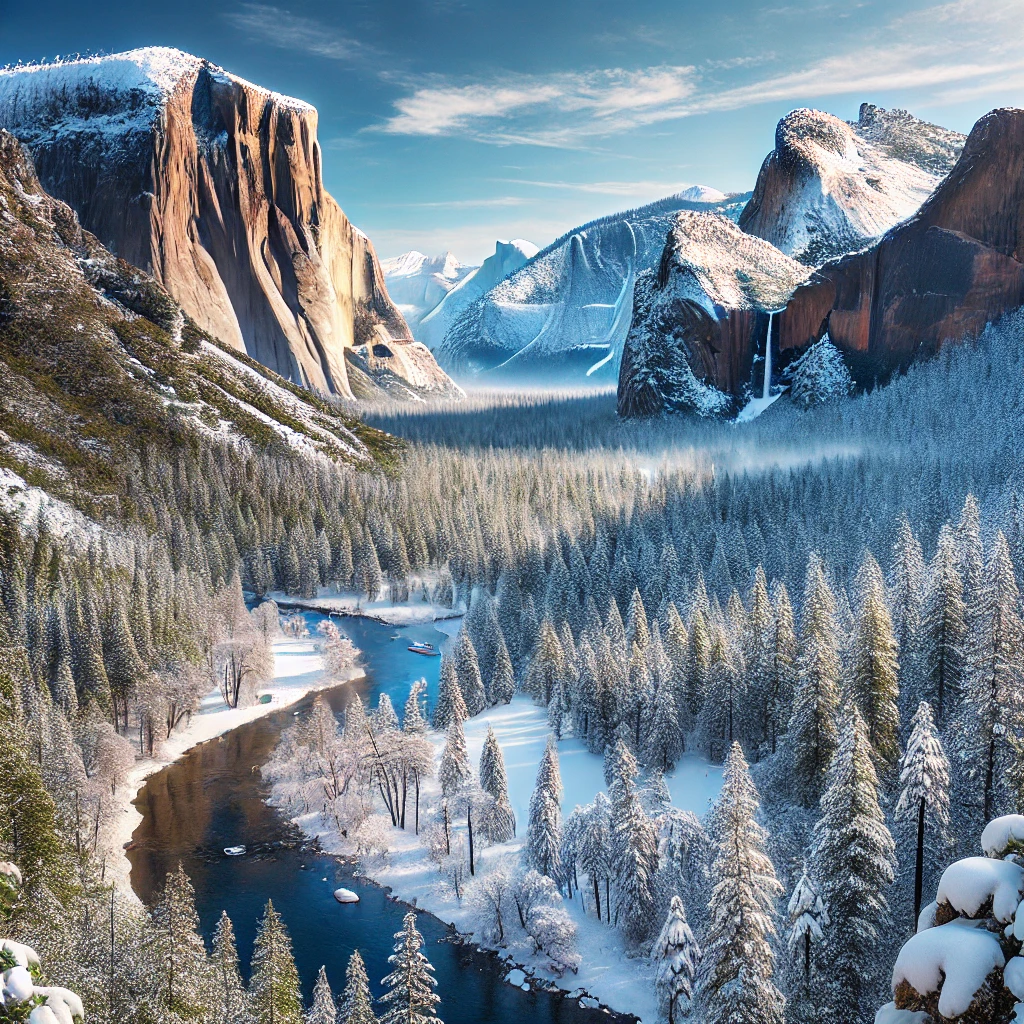
Yosemite Valley, framed with ice-encrusted trees and a serene coating of snowfall, becomes a serene paradise. The towering monoliths of Half Dome and El Capitan, renowned climbing spots in warmer months, appear even more majestic as their granite faces are dusted with glistening snow. This contrast of stark white against the rugged rock formations enhances their grandeur, offering photographers and nature enthusiasts a unique perspective.
Beyond the visual splendor, Yosemite provides a plethora of winter activities for visitors. Cross-country skiing and snowshoeing trails across the valley allow adventurers to explore the pristine winter landscapes while the azure sky offers a striking backdrop. Ice skating at the Curry Village rink surrounded by scenic views turns a simple activity into an extraordinary experience. For those seeking tranquility, the peaceful ambiance of a winter hike to Mirror Lake, reflecting the snow-laden peaks, offers a moment of serene reflection and beauty.
While the winter charm of Yosemite is undeniable, certain preparations and tips can significantly enhance the experience. Visitors should be aware of potential road closures and always check the weather forecast. Carrying proper winter gear such as insulated clothing, waterproof boots, and traction aids is crucial for comfort and safety. Winter daylight is shorter, so planning activities within daylight hours maximizes safety and enjoyment.
Winter in Yosemite National Park uncovers an awe-inspiring realm where snow transforms iconic sights into stunning landscapes. Whether it’s the sheer visual delight or the abundant winter activities, experiencing Yosemite during this season is a privilege not to be missed.
Rocky Mountain National Park: Majestic Peaks in Winter
Nestled in the heart of Colorado, Rocky Mountain National Park transforms into a breathtaking winter wonderland as snow blankets its rugged landscapes. The park, renowned for its majestic peaks, offers visitors an unparalleled experience during the colder months. With altitudes reaching as high as over 14,000 feet, the snow-capped peaks form a mesmerizing skyline against the clear, crisp winter air, creating a peaceful and awe-inspiring ambiance. The pristine beauty extends to the park’s numerous frozen lakes that glisten with a unique, ethereal quality, captivating sightseers and photographers alike.

Winter in Rocky Mountain National Park is not just about passive enjoyment; it is a season ripe with recreational opportunities. Snowshoeing is a favored activity, allowing adventurers to traverse the picturesque trails that weave through snow-laden forests and meadows. For those seeking a more vigorous workout amidst the winter beauty, cross-country skiing provides an excellent way to explore the park’s diverse terrains. The snowy expanses present an idyllic setting for both beginners and seasoned skiers to enjoy the serene landscapes.
Wildlife watching takes on a special allure in winter, as the park becomes home to a variety of animals well-adapted to the cold. Elk, deer, and bighorn sheep can often be spotted navigating through the snow in search of food. Bird enthusiasts will find joy in observing the hardy species that remain active in the chill, such as the striking Steller’s jay and the elusive ptarmigan. The sight of these creatures against the backdrop of a snowy wilderness highlights the resilience and beauty of nature.
Rocky Mountain National Park in winter epitomizes the quintessence of seasonal splendor. Whether engaging in invigorating winter sports or simply soaking in the serene landscapes, visitors are guaranteed a truly memorable experience. The park’s splendid combination of majestic peaks, frozen lakes, and vibrant wildlife offers a rich tapestry of winter beauty, inviting all to experience its magic.
White Mountains: New Hampshire’s Snowy Retreat
The White Mountains of New Hampshire present a mesmerizing winter wonderland, encapsulating the essence of seasonal beauty. Notably, Mount Washington stands as a majestic emblem, often cloaked in a thick blanket of snow. As the highest peak in the northeastern United States, it offers awe-inspiring views and challenging winter hiking trails. Weather conditions on Mount Washington are famously unpredictable, rendering it a treasure trove of untamed natural beauty during the winter months.
In the heart of the White Mountains, Franconia Notch is another jewel. Its dramatic cliffs and icy waterfalls create an ambiance of serene magnificence. Visitors can traverse the Franconia Notch State Park, taking part in winter sports like skiing and snowshoeing. Cannon Mountain is a favorite for its superb ski slopes, presenting an exhilarating experience amidst the pristine winter landscape.
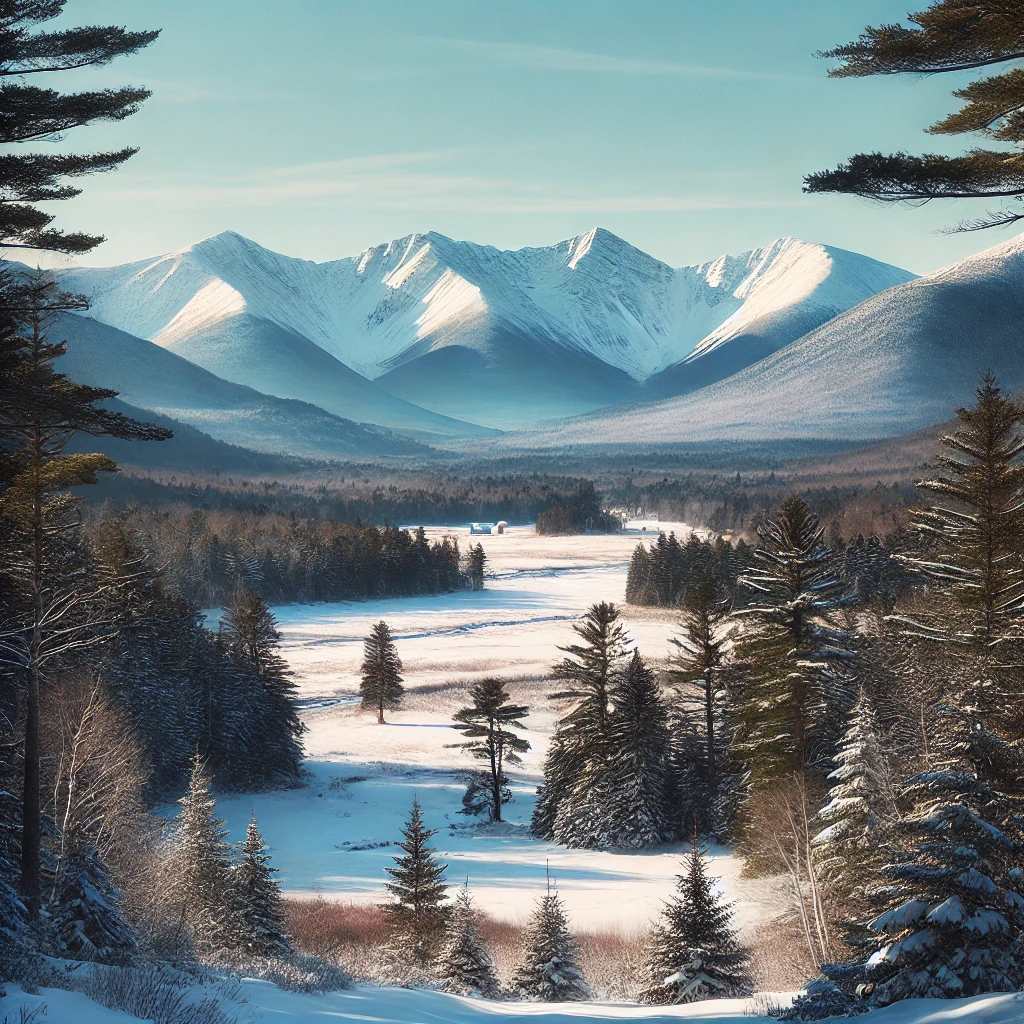
Another highlight, the Kancamagus Highway, weaves a scenic route through the White Mountains, renowned for its picturesque views and charming landscapes. This drive, often called “The Kanc,” becomes especially enchanting in winter. Snow-clad trees, frozen streams, and the silence of the wilderness make the highway a must-see for those seeking the ethereal beauty of a snowy retreat. The highway also provides access to various hiking trails, popular among outdoor enthusiasts aiming to explore the winter scenery.
Winter activities in the White Mountains extend beyond mere sightseeing. Whether it’s skiing on the powdery slopes of Wildcat Mountain, snowboarding at Bretton Woods, or ice climbing in Crawford Notch, the region offers a diverse range of winter pursuits. Snowmobiling enthusiasts will find extensive, well-maintained trails, and cross-country skiers have numerous options, such as Jackson Ski Touring Center.
To experience the peak winter beauty, plan your visit from late November to early March. During this period, snowfall is at its most abundant, transforming the region into a picturesque, snow-covered haven. Indeed, the White Mountains stand as a premier destination, showcasing nature’s exquisite canvas where snow and landscape harmoniously converge.
Great Smoky Mountains: A Winter’s Embrace
The Great Smoky Mountains, straddling the border of North Carolina and Tennessee, transform into a winter wonderland during the cooler months. Enveloped in a serene blanket of snow, the park’s misty peaks appear ethereal, lending a mystical quality to the landscape. This natural spectacle is complemented by snow-dusted trees and silent, meandering rivers that evoke a sense of tranquility and awe. The snow-covered flora creates a picturesque scene, painting a stark contrast against the typically vibrant greenery of the other seasons
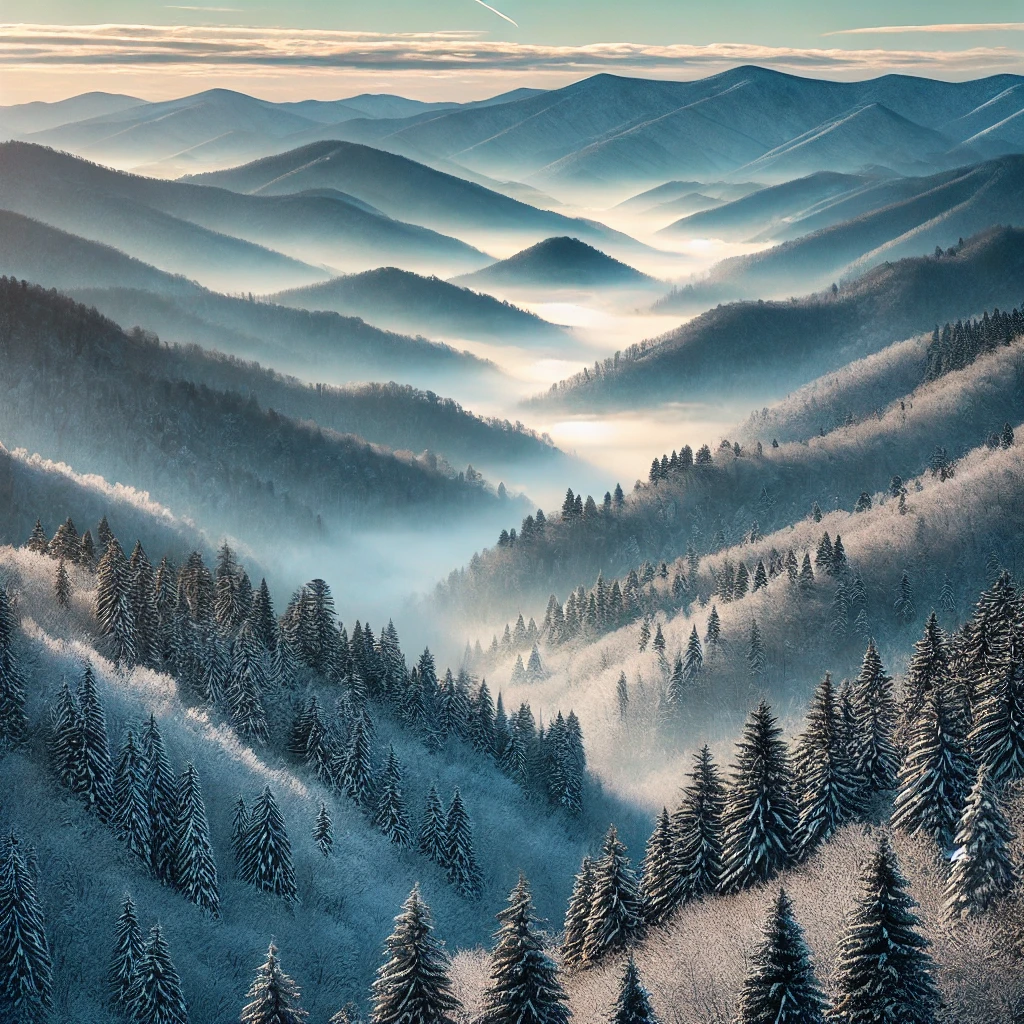
Winter in the Great Smoky Mountains offers a unique charm with its quiet trails and a slowed pace of life, far removed from the bustling crowds commonly seen in spring and summer. The reduced number of visitors during this season allows for a more intimate connection with nature. Scenic drives and hikes become solitary experiences, with the crunch of snow underfoot and the soft rustle of the wind in the trees as the only accompanying sounds. Popular paths such as the Alum Cave Trail or the Clingmans Dome offer stunning views, framed by frosty landscapes and crisp, clear air.
This winter quietude also provides an excellent opportunity for wildlife observation. Deer, elk, and other creatures can be spotted more easily against the snowy backdrop, adding an element of surprise and delight to any winter outing. Furthermore, the park’s serene rivers, often gently steaming in the cold air, enhance the overall peaceful ambiance, creating ideal conditions for reflective solitude or leisurely contemplation.
In essence, winter bestows upon the Great Smoky Mountains a serene beauty and an unmatched peacefulness. For those seeking a restorative experience, free from the distractions of larger crowds, the snow-swept, tranquil landscapes of this national park during winter offer a breathtaking respite that beckons with its silent allure.
Northern Lights Over Alaska: A Winter Sky Spectacle
Observing the Northern Lights in Alaska is an awe-inspiring experience that embodies the true essence of winter beauty. This natural phenomenon, also known as the aurora borealis, illuminates the night sky with breathtaking displays of vivid colors, creating a magical atmosphere exclusive to the winter months. Alaska, particularly regions such as Fairbanks and Denali National Park, is among the world’s premier destinations for viewing this celestial spectacle.
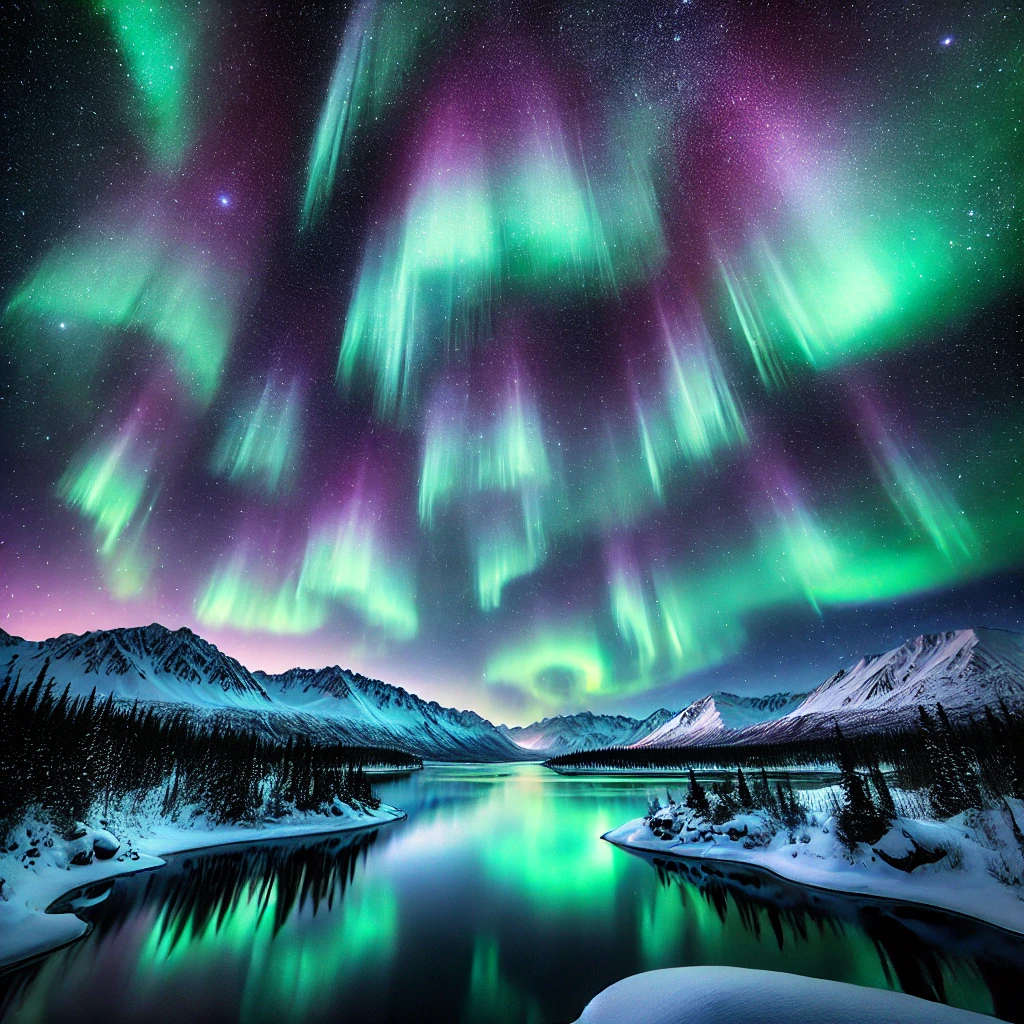
Fairbanks, situated just below the “aurora oval,” offers optimal conditions for witnessing the Northern Lights. The long, dark nights of winter, combined with minimal light pollution, provide a clear canvas for the aurora’s vibrant dance. Here, visitors can also engage in complementary winter activities such as dog sledding, ice fishing, and snowmobiling, rendering their Alaskan adventure multifaceted and exhilarating.
Denali National Park, known for its majestic landscapes, transforms into a serene snowy wonderland during winter. The park’s vast wilderness offers impeccable opportunities for viewing the Northern Lights without the interference of urban lights. Winter also enhances the natural tranquility of Denali, making it a perfect retreat for those seeking both adventure and tranquility. Activities like snowshoeing, cross-country skiing, and wildlife spotting further enrich the auroral experience.
The cold, crisp air of an Alaskan winter, combined with prolonged hours of darkness, significantly boosts the probability of observing the aurora. These conditions are crucial in enhancing the visibility of the Northern Lights, as the particles from the sun interact more intensely with the Earth’s magnetic field, creating more vivid and frequent displays. Thus, wintertime affords the optimal setting for witnessing one of nature’s most magnificent spectacles.
Experiencing the Northern Lights over Alaska’s snowy landscapes is truly unparalleled. The combination of naturally stunning displays and the pristine, wintry environment creates a unique beauty that captivates and inspires. The winter season not only heightens the visibility of the aurora borealis but also encapsulates a diverse range of activities that celebrate the enchanting essence of winter landscapes.
Winter at the Grand Canyon: A Unique Perspective
The Grand Canyon, renowned for its iconic rock formations and sweeping vistas, takes on an entirely different character in winter. As the season casts its chill, a pristine blanket of snow graces the canyon’s rugged terrain, providing an awe-inspiring contrast to the rich, red hues of the exposed rock. This juxtaposition of colors creates a striking visual effect, offering a rare and captivating sight that few get to experience firsthand.

When the bright blanket of snow descends upon this natural wonder, it transforms the already breathtaking scenery into an almost surreal, silent spectacle. The normally bustling viewpoints, teeming with tourists during peak seasons, are miraculously serene. This tranquility offers visitors the chance to immerse themselves in the raw beauty of winter landscapes without the usual crowds. The air is crisper, and the stillness of the canyon, punctuated only by the crunch of fresh snow underfoot, provides a perfect setting for reflection and appreciation of Mother Nature’s handiwork.
Winter also presents unparalleled opportunities for photography. The interplay between the softened, snow-capped cliffs and the shadows cast by the lower winter sun creates dramatic images that capture the essence of this rugged wilderness. Each snowfall redefines the landscape, offering new angles and compositions, enticing photographers with varying shades and textures. The clarity of winter air further enhances visibility, making for exceptionally sharp and vibrant photographs that immortalize the fleeting winter beauty.
Visiting the Grand Canyon during the off-season is not just about visual splendor. With fewer visitors, there is a heightened sense of solitude and peace. The trails, often crowded in warmer months, are quieter, inviting hikers to explore at a more leisurely pace. Additionally, lodging and amenities are more readily available without the peak season rush, making it easier to plan a serene getaway. All these factors compose a compelling invitation to witness the Grand Canyon’s unique winter charm, where nature’s winter beauty enhances an already majestic landscape.
Conclusion: Embracing the Cold to Find Beauty
In conclusion, the winter season offers a unique opportunity to witness the United States’ landscapes transformed under a pristine blanket of snow. From the towering peaks of the Rockies to the serene stillness of New England’s forests, these destinations reveal a tranquil beauty that can only be appreciated during the colder months. The soft, powdery snow enhances the natural grandeur, creating scenes that rival any artistic masterpiece.
Embracing the cold unlocks a wealth of breathtaking experiences, where the world becomes quiet and nature’s winter beauty is amplified. The shimmering white landscapes provide a stark contrast to the lush greenery of other seasons, offering a fresh perspective on familiar terrains. Travelers can enjoy activities like snowshoeing, skiing, and cozying up by a warm fire, immersing themselves in the peacefulness that winter bestows upon these locales.

Winter travel not only invites one to experience the landscapes differently but also to escape the everyday hustle and find solace in nature’s simplicity. The clarity of winter air and the glistening, frost-covered trees create an ethereal ambiance that calls out to explorers and serenity seekers alike. As the snow falls gently to the ground, each flake unique in its beauty, the landscapes become a silent testament to the fleeting yet extraordinary wonders of the season.
Therefore, to truly appreciate the full spectrum of nature’s grandeur, one must venture out into the cold. By embracing winter travel, we uncover spectacular vistas and graceful landscapes, broadening our appreciation for the natural world and its diverse expressions. So bundle up, step outside, and be prepared to be captivated by the serene and stunning beauty of snow-covered scenes across the United States.





